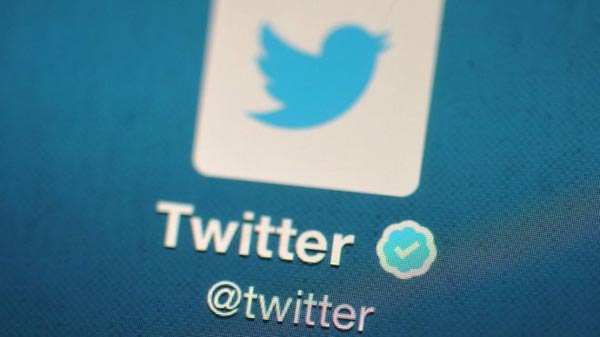
California, US (BBN)-The feature that much of Twitter has dreaded for at least the past week is finally here: The social network has gone algorithmic.
The change is an opt-in feature that is not the default setting (for now), reports Mashable.
What it means for users is that you'll see a block of tweets ranked by importance or relevance at the top of your timeline when you open the app or visit the site.
The idea is that those tweets will be the most interesting or useful to you.
Underneath those, you'll see the tweets of accounts you follow in strictly reverse chronological order.
The move continues Twitter's efforts to make use of its largely wasted real estate on its welcome screens and at the top of uses' timelines.
Right now, Twitter seems to be using the update to ease its user base into the algorithmic system; In the weeks to come, the new feature will become the default in place of the classic timeline.
The changes comes the day after Twitter introduced a new advertising format called "First View," which allows advertisers to exclusively take over the top slot on your Twitter feed for a 24-hour period.
Some were quick to point out that the new ads seem to fit nicely with the rumored (now confirmed) algorithm.
For the brands and advertisers who rely on Twitter to sell things, the new system may be something of a mixed bag.
The company says promoted tweets and accounts will appear in user feeds the same way that they always have.
Still, advertisers are hoping the algorithmic feed may give precedence to tweets about live events or bring more opportunities to introduce brands to unfamiliar users.
Some media and advertising execs were optimistic, banking on the algorithm eventually bringing more targeting and promoting opportunities.
"Our expectation is that they are working on technology that is going to make the advertising also as highly relevant to that user experience," said Allen Duan, who works in the office of Hearst's Chief Technology Officer.
"Our hope is to be able to do a better job of tapping into that capability to better target audiences we work with."
But others are wary. For one thing, Twitter hasn't made clear exactly what criteria its algorithm will take into account.
Marketers have concerns that the new system will shut out all but the most compelling organic branded tweets in the same way that Facebook's algorithm did when it was first implemented.
That would effectively push advertisers into paying to boost their content, making Twitter more "pay-to-play" than ever before.
Another concern: Twitter's ability to pull it off.
One advertising executive who is familiar with the test run of the new feature said the company does not seem have the technical capabilities to pull off the algorithm.
Tweets show up seemingly arbitrarily, and the system tends to skip over long gaps of time.
It may be that the big, heralded change will have very little effect.
Jeanne Bright, Digitas' head of paid social and strategy, said she doubts the change will have much effect at all on how Twitter's ads work.
The one exception, she said, may be an eventual shift in focus away for the company away from the destination for real-time marketing it has become known as.
"It’s something brands have been preparing for on Twitter, or minimally have known might be coming, for a while now –- ever since Facebook moved away from recency in the Newsfeed," Bright told Mashable. "Even more reason that paid social is important – social will fully be 'pay to play' and Twitter was one of the last holdouts."
For media companies, which experienced the turbulence that small changes in Facebook's algorithm could create for an entire industry, the prospect of an entirely algorithmic timeline may be more worrying.
Vivian Schiller, former head of news at Twitter and current board member of Vocativ, said she doesn't expect the the changes currently being implemented to have much of an effect on the social network's relationship with publishers at all.
"They have to keep experimenting, right?" Schiller said.
"If anything, that's been the big criticism of Twitter that they've been static for so long.
Whatever they learn form this, they should keep iterating the product."
However, she also warned that if the company continues to evolve in this direction, it may create a dilemma for news organizations down the line.
"Facebook started down that slippery slope. It was also reverse [chronological] and slowly, 'Why not try this algorithm?'" Schiller said.
The major update comes the morning before Twitter is set to report its earnings to Wall Street on Wednesday and after a weeks-long freefall in Twitter's share price and a recent site-wide user revolt over the specter of the algorithm.
Analysts will no doubt be paying close attention to whether Twitter has a viable plan to turn around stagnating user numbers and make more money off of the users who area already on the service.
BBN/TR/AD